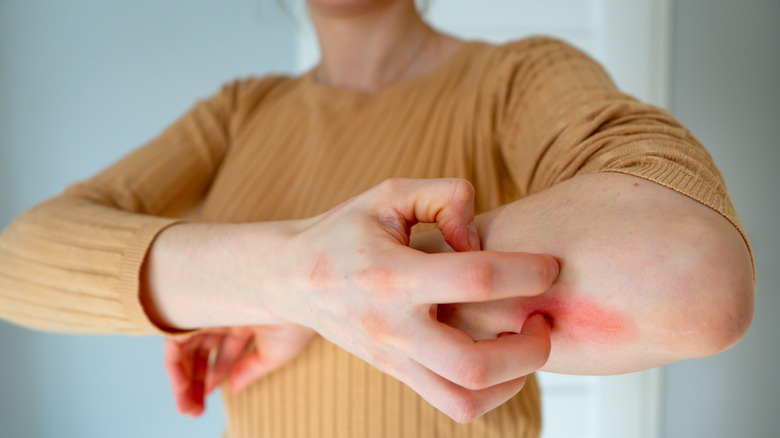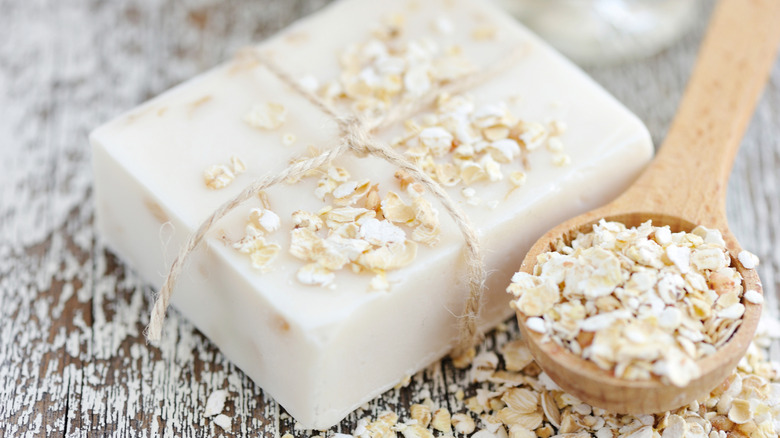Why You Should Consider An Oatmeal Bath To Soothe Your Rash
From diaper rash to chickenpox to a nasty sunburn, did you know that oatmeal baths can provide effective relief for different kinds of skin conditions that produce rashes?
As defined by Penn Medicine, "Rashes involve changes in the color, feeling, or texture of your skin." Depending on the type of rash, you may notice redness, itchiness, inflammation, scaling, or flaking of the skin. Some skin conditions characterized by the emergence of rashes include eczema, psoriasis, or shingles, but a rash can also be triggered by external factors, such as weather changes, insect bites, poison ivy, or contact with irritating soaps or detergents.
Verywell Family reports that oatmeal baths can benefit children and adults alike who may be dealing with the discomfort of a rash. What makes an oatmeal bath so soothing are its anti-inflammatory and hydrating effects on our skin (via Healthline). However, the kind of oatmeal we're talking about isn't the kind you heat up in the microwave for breakfast.
Steps for making a DIY oatmeal bath
Rather, oatmeal baths are created with colloidal oats — or oats that have been finely ground into powder form for optimal absorption, explains Verywell Family. While it's possible to grind your oats DIY-style through the use of a blender or coffee grinder, others may opt to purchase oatmeal bath products.
If you're looking to concoct a homemade oatmeal bath, experts at Verywell Family say to start by processing 1 cup of either quick, slow-cooking, or flavorless instant oatmeal oats into a blender. If the oatmeal bath is for an infant, you'll only want to use ⅓ cup of oats. To determine whether or not the oats have been sufficiently ground, mix 1 tablespoon into a glass of tepid water. If the water turns a murky white color with a silk-like texture, you're good to go.
Next, Healthline suggests pouring a sample ½ cup of oats into your lukewarm bath. Do not add more than 1½ cups into the mixture. Swirl the bathwater evenly with your hands and break up any larger clumps you may come across (via Verywell Family). For both children and adults, stick to no more than 15 minutes of soak time, as any more can dehydrate the skin. Afterward, use a towel to pat dry and finish off with a moisturizer over the affected area.


